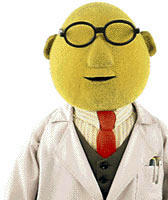“The theme of Chapter IV is the mechanization of the natural world – that seventeenth century development which has often been seen as a decisive advance on organic models of the cosmos.”(p. 13)
“One of the many ironies in our story is that a model for the universe, which in the seventeenth century was used to affirm God’s sovereignty, was used by the deists of the eighteenth century in their attacks on established religion” (p. 13)
“Isaac Newton saw in the very laws he discovered a proof, not of an absentee clockmaker, but of God’s continued presence in the world” (p. 118)
“The basic postulate of the mechanical philosophies was that nature operates according to mechanical principles, the regularity of which can be expressed in the form of natural laws, ideally formulated in mathematical terms” (p. 119)
“This ability to create two worlds, to relate the real world to an idealized mathematical model, was one of the techniques that made modern science possible” (p. 121)
“For Bacon, as for Boyle and Newton after him, it was simply inconceivable that, from chance distribution and collision of atoms, a wolrd of such order could have been produced - and order that the progress of science was confirming rather than destroying” (p. 125)
“An event could be deemed a miracle if it was not explicable in terms of physical laws.” (p. 127)
“He was not bound by any kind of logical necessity, nor by the laws of nature, for they were simply expressions of the way He normally chose to act.” (p. 134)
“Newton’s conviction that “God was everywhere from eternity” had implications for how space and time were to be conceived. They, too, had become absolute rather than relative contructs. For DesCartes there had been no space without matter; for Newton there was no space without God.” (p. 137)
"It was often said that the test of a good Cartesian was whether he would kick his dog." (p. 141)

“Chapter V takes us into the eighteenth century and into that period of the “Enlightenment” when the sciences were hailed as instruments of progress and when institutionalized religion, especially in Catholic countries, was vilified for its superstition and priestcraft.” (p. 13)
“It was often not the natural philosophers themselves, but thinkers with a social or political ax to grind, who transformed the sciences into a secularizing force.” (p. 13)
“If scientific knowledge derived from reflection on ideas that arose ultimately from sense experience, it was tempting to generalize and say that no other mode of knowing was possible” (p. 154)
“An antipathy to voluntarist theologies is evident in Leibniz’s remark that a secure foundation for law is to be found not so much in the divine will as in His intellect, not so much in His power as in His wisdom.” (p. 161)
“Miracles, Leibniz insisted, were to supply the needs of grace not to remedy second rate clockwork.” (p. 162)
“Priestley makes a fascinating study because he personified a set of values that allowed the integration of scientific and industrial progress into a process theology, which promised the eventual triumph of rational Christianity. Progress in science was to be “the means under God of extirpating all error and prejudice, and of putting and end to all undue and usurped authority in the business of religion as well as science.”” (p. 180)
“That the Christian religion could be given a rational defense became one of Hume’s principal targets. He did not deny that the universe must have a cause. The question was whether anything could be known about it.” (p. 182)
“The gist of it was that no testimony was sufficient to establish a miracle unless the testimony was such that its falsehood would be more miraculous than the fact that it purported to establish. Defining a miracle as a violation of the laws of nature, Hume insisted that there must be a strong antecedent probability against its having occurred. Human testimony, however, was know to be capricious and corruptible” (p. 184)
"He (Wesley) stressed, as before, that his aim was not to account for things, only to describe them." (p. 191)
"The lesson that Wesley's many readers would have absorbed was that a science of nature, not bedeviled by arrogant theorizing, could offer rational support for Christian piety - revealing, as it appeared to do, a marvelous organization and adaptation within the created order." (p. 191)
























